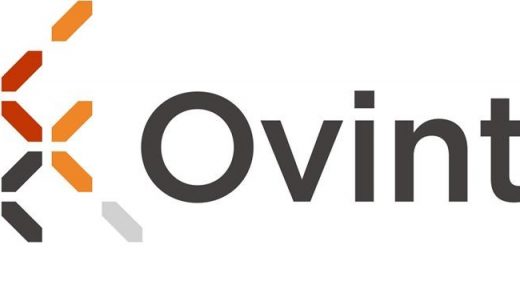
In 1789 Benjamin Franklin wrote “in this world nothing can be said to be certain, except death and taxes”. In 2022, Franklin might be moved to add nurses, as your chance of getting through life without one tending to you is pretty much nil.
Unlike taxes and death, nurses come into the positive category, always there to help, to heal, to soothe fears or help you avoid illness.
In fact, you might say they’re sacrificing angels and heroines.
WARNING: If you do say that, don’t do it within earshot of historian and nurse Dr Pamela Wood, whose book New Zealand Nurses: Caring for our People 1880-1950 was published in April.
READ MORE:
* Terminally ill patient backs nurses: ‘I’m dying, but this is so important’
* Long hours, a culture of smoking and great camaraderie: nurses remember their time on the ward in the 40s
* A researcher’s unknown connection to her subject
Wood says angels and heroines are loaded phrases, which created a myth around nursing, one which her research shows directly led to 140 years of poor pay in comparison to other professions.
Explode that myth. Nursing is not do-gooding in a uniform. It’s not all Florence Nightingale, The Lady With the Lamp. It’s a profession. It’s study, it’s hard work, it’s helping people who are sick or needing surgery, it’s promoting health and helping people to stay well.
Professionals, not angels
“Nurses don’t want to be perceived as heroic. That is not what they say about themselves,” Wood says. Up until as late as the 1960s, nurses had to leave if they married, a restriction that simply added to the myth it was a whole-hearted calling.
“People going into nursing never thought about it like this – the idea of being a self-sacrificing dedicated person who gave up all for nursing wasn’t the way nurses themselves saw it.”
And yet that was the way the New Zealand public saw it, and their view proved a handbrake on the ability to earn a decent wage, as those with the purse strings held them tight when it came to paying the biggest segment of the health workforce.
Supplied
“Nurses don’t want to be perceived as heroic. That is not what they say about themselves,” says Dr Pamela Wood (top right).
“This has been something that’s endured all the way through the decades from the 1880s,” Wood says. “The public, in the sense of admiration of nursing, often called them sacrificing angels and heroines.
“This worked against the idea that nurses had of themselves. They saw themselves as proficient professionals, not self-sacrificing angels, and that was one reason why nursing – New Zealand nursing – has had a 140-year record of being underpaid.
“Nurses have made great strides very recently. In their salaries. But the nurses working outside of the DHB system are still looking for that recognition of salaries. And certainly that idea that they are heroic and self-sacrificing doesn’t help in trying to get that recognition.”
The nursing reform movement led by Nightingale originated in Britain in the 1860s, saw nursing leaders (matrons) sent around the British Empire with their ideas about cleanliness and discipline. Annie Crisp, the first Nightingale-trained matron, landed in New Zealand in the 1880s.
Nursing was feminised, and to encourage young women to become nurses, supervised nurses’ homes were set up on hospital premises. And yet 40 years on, In the mid 1920s, a woman was better off working as an office clerk, or as a cleaner than she was as a nurse. The pay was higher, the hours shorter and the responsibility less heavy.
Nurses earned on average 52 pounds ($104) annually, an office worker 70 pounds, a cleaner and a waitress 100 pounds.
“As you know, female occupations have always been paid less. And those 1926 statistics were looking at female occupations … and of all those, nursing was the lowest.” Until the profession was added to superannuation in 1926, nurses were often farewelled with a purse of sovereigns.
Supplied
Kate Wyllie (centre) appears to have been the first nurse to qualify at Gisborne Hospital in 1901, and the first Māori woman to register as a nurse in 1902.
It all riled up the National Council of Women, who said at the time nurses were “scandalously paid”. “The career of a nurse was one of self sacrifice, and she frequently had matters of life and death in her hands,” the council said.
In her research, which has spanned decades, Wood found “the historical sources are very clear” in where the unhelpful pay-restricting image of a healing angel came from.
“It’s the public talking at meetings, writing letters to the editor. In all of those ways, showing that that’s how they thought of nursing and nurses,” she says. “It wasn’t necessarily a ploy by those paying nurses, but it bolstered that idea that nurses could be low paid, and of course, being the largest workforce in the health system, it’s the one with the biggest budget implications.
“It’s good to know that this is changing, with significant gains in nursing salaries just recently, and I hope that continues so that nurses get the recognition as a valuable profession.”
Earthquakes, pandemics, war
After 30 years teaching undergraduates and postgraduates, working here and overseas, Wood opted to put her knowledge into practice, and write a book based on her research papers, so the public could better understand her beloved profession.
Wood casts a Florence Nightingale lamp over the work of her predecessors, and across its impressive breadth of activity. Excrement, pus, blood and sputum is splattered across the pages, not literally, you understand.
“What has always struck me is the range of places that nurses have worked,” Wood says.
“It’s outside of hospitals; district nursing, historically backblocks nursing, nursing in Māori settlements, in factories and clinics and schools, and responding in disasters like earthquakes and pandemics. And war.
“That spread of places where nurses have worked is really crucial to understanding the profession. They’re very adaptable, nurses, very adaptable and resourceful and innovative in the way that they can create a nursing service to meet a particular need.”
Supplied
New Zealand nurses serving in the Boer War.
Nurses have ridden horses and bicycles on their rounds. They’ve died in their uniforms; 10 were torpedoed in the Mediterranean on troopship Marquette in 1915 during World War I, influenza claimed 42.
When the 1931 Napier earthquake felled the three-storey nurses home, a rescuer was told by a trapped nurse to tend those who needed help more than her. Soon after, a steel beam fell on her, crushing her head.
A century or so ago if a nurse caught an illness, it was the fault of the heroic self-sacrificing angels, or so professional opinion ran. Obviously they had failed to take sufficient care.
“There was this culture of blame at the time that they weren’t being careful enough in their nursing if they got the patient’s disease,” Wood says. “The only times that nurses weren’t blamed for catching a patient’s disease were times like war backblocks nursing, and the fever camps. For immensely difficult circumstances, they weren’t blamed.
“That was different in 1918 because nurses were living in nurses homes, they weren’t married, they didn’t have immediate families to care for.”
No statistics exist on the number of nurses who died of diseases caught off their patients, she says. Some died while still in training. “There have always been nurses who have died because of the work, we don’t cluster them together as numbers. It has always happened.”
So why a book? Wood calls it the logical culmination of years of work and research, and a story that needed to be told to the public. And yet, when you listen to her passion, her gentle corrections of misguided questions, her non-judgmental guidance of a befuddled interviewer toward the facts, you get the idea that this was a passion from very early on.
And so it proves, with Wood saying her dolls and teddy bears were given the very best of care.
Supplied
“The idea, the motivation has always been very varied. But still at the heart of it is wanting to be of use, and to help people,” says Wood.
“I always wanted to be a nurse. I was one of those young people who can say that,” she laughs.
Then there was her first mentor in her neighbour Mrs James. “Mrs James across the road had been a nurse and I used to go and listen to her stories.
“She trained at Christchurch Hospital, in the 1930s. And I was riveted by the stories she could tell. So I had a sense from those times that there was a history to nursing as well.
“People aren’t coming into nursing programmes unless they want to help people who are sick and work in some way towards health. It’s very much part of it. The idea, the motivation has always been very varied. But still at the heart of it is wanting to be of use, and to help people.”
And so a nursing career, then an academic one followed, as she roamed from Middlemore, to Christchurch, Otago, Wellington, Melbourne and Napier. A nurse, a teacher of nurses, an academic, a historian, and now, author.
And now a book because, as Wood explains, most of her writing as a nursing historian had appeared in academic and professional journals, most of the public never saw.
“I wanted to pull together what I knew, and do some more research and have it as a book that was available to anyone who wanted it, anyone who wanted to read it,” she says. Commonly authors start out full of zest, then find the writing all a bit of a grind. Not in this case, Wood says. “I loved it all the way through”.
And even after 30 years of research, nursing still managed to surprise her in a way that made her laugh at herself. “When I was talking to students who were new to nursing programs, I would ask them, what kind of nurse did they want to be, where do they want to work and so on?
“The ones who spoke up were always the ones saying ‘I want to work in intensive care. I want to work in emergency departments.’ They wanted all that drama and the bells and whistles, and I was thinking ‘what about working in medical wards and helping people with recovering and rehabilitation after strokes, what about all of that?’
“When I was doing the extra research for the book what I did find was chief nurses and other senior nurses in the past also saying `why do nurses always want to work in surgical nursing where there’s the drama and frequent turnover of patients? Why won’t they work in medical wards and rest homes and rural hospitals?’
“I thought, ‘Oh, here’s me thinking this was a big change’. And it’s not, it’s always been there. So that was such a surprise, that I had to laugh at myself. I had been coming at it as if it was something that was in my time, but not before.”
The parallels between NZ 1920 & Aotearoa 2022
While Wood points out historical context can twist the way things are seen, 100 years on it is possible to draw parallels between New Zealand 1920, and Aotearoa 2022: both had pandemics, shortages of nurses, and issues around poor pay for nurses.
At the tail end of WW1 – in which Kiwi nurses served in Europe – the Spanish flu epidemic struck. There were lockdowns, isolation, nurses worked long hours, and got sick.
“Nurses were absolutely needed during the 1918 influenza pandemic,” she says. “The parallel with today, if you like, is that nurses had then, as they do now, the aim of providing the best care possible for people.
“We have to be careful when we compare the past with the present because the context is always different.
“Now nurses are having to make really hard decisions about giving the best possible care, and at the same time protecting their families, and others outside of the hospital.
“That was different in 1918 because nurses were living in nursing homes, they weren’t married, they didn’t have immediate families to care for. The other major difference was that, in the 1918 pandemic, a quarter of the trained nursing workforce was still on service from the end of World War One, so the nurses in the country at the time were down in numbers. Three quarters of them got sick.
“We talk today about overwhelming the health system, and trying to avoid that. The health system back in 1918 was absolutely overwhelmed and had to rely on volunteers.”
Dirt, body and duty
Nursing then was about dirt, body and duty. Cleaning was the first thing learned: handwashing in days before penicillin involved scrubbing the hands for 10 minutes, then immersing them in biniodide of mercury.
Wood’s book also has helpful nursing tips, such as how to shake a thermometer, and how to assess health by the colour, texture, and smell of poo. Sputum can be mucoid (thin and colourless) or mucopurulent (thick, tenacious, greenish yellow) or purulent (yellow, thick with pus).
All very helpful, you will agree, and then there are the 1920s qualities that were asked of nurses. Here is the Code of Virtues: punctuality, obedience, method, keen observance, loyalty and economy (hospital and management), sympathy, gentleness, tact, courtesy, cheerfulness, kindness tempered with firmness and quietness, even-tempered, dignified, truthful, reliable and careful.
As if that wasn’t enough, some text books list additional virtues: patience, generosity, tenderness, a sense of proportion and a sense of humour.
But even if nurses do have a sense of humour, don’t pull the “sacrificing angels and heroines” line. It’s not funny now, and hasn’t been so for 140 years.
New Zealand Nurses: Caring for our People 1880-1950, Otago University Press, out now, $45.


